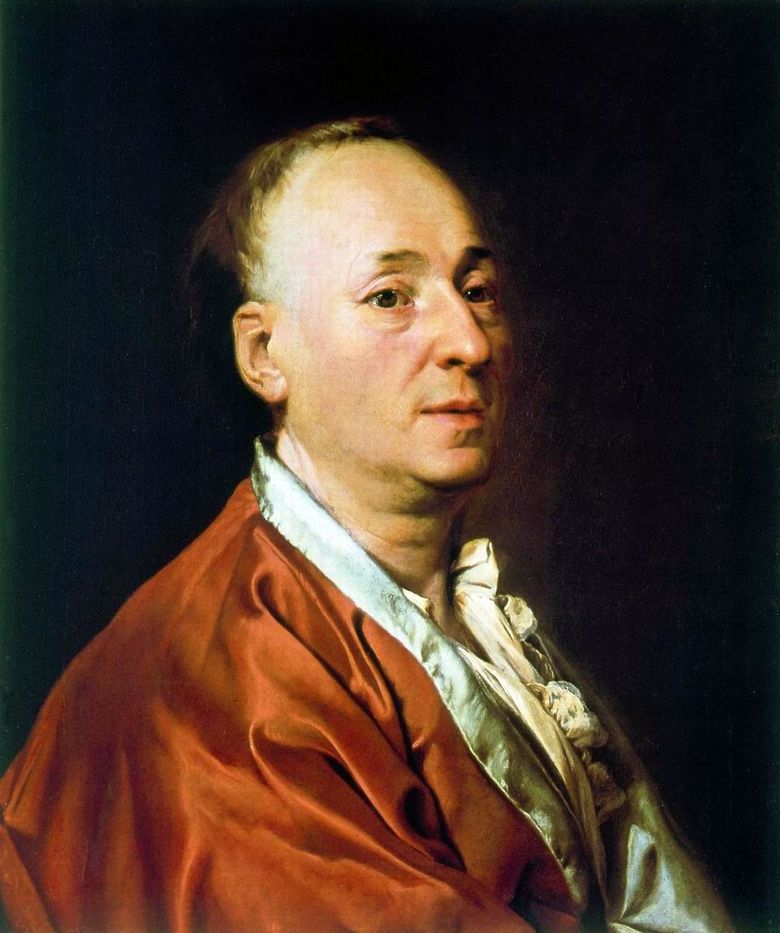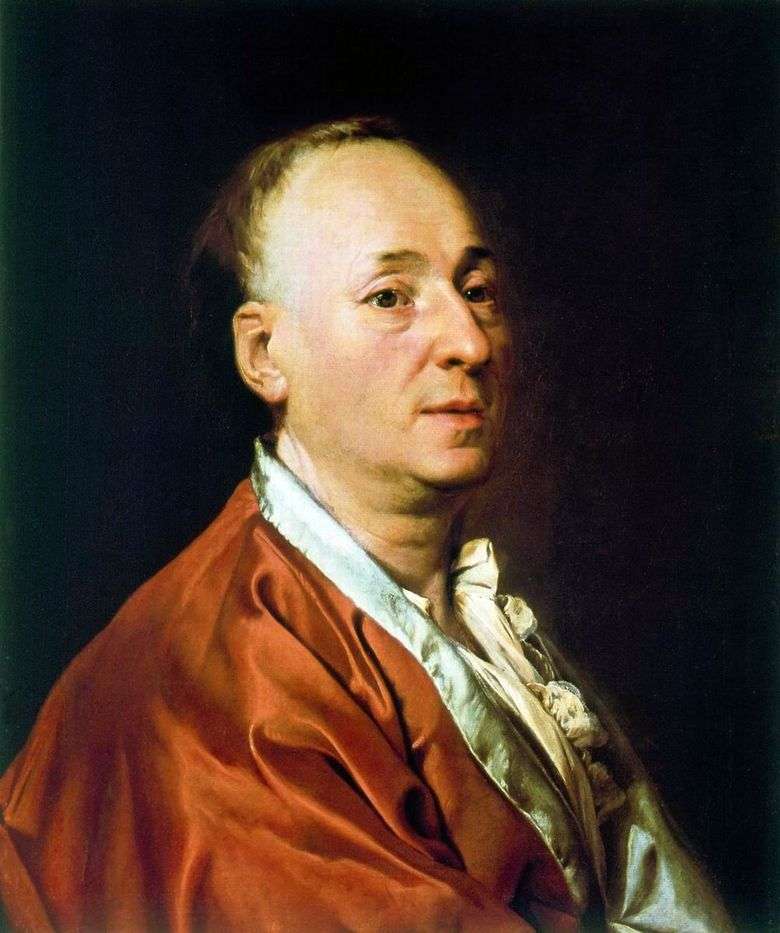
By the same years, when D. G. Levitsky, at the apogee of his creative uplift, worked on the images of Smolensk, are the first survivors of the master in the genre of chamber portrait. The earliest of them is the portrait of Denis Diderot, written in 1773-1774 during the visit of the famous French philosopher to Russia at the invitation of Catherine II. The portrait was obviously painted in the house of Prince S. N. Naryshkin in Petersburg, where the honored guest lived during his entire visit to the northern capital.
Prince Naryshkin, presumably, and introduced Levitsky to Diderot. Currently, the portrait is in the museum of the city of Geneva in Switzerland. Levitsky did not flatter the illustrious encyclopedist, just noticing the shortcomings of his appearance. Diderot is depicted at home – in a bathrobe and without a wig. Face taken close up and close to the viewer. With pastous strokes, the high forehead of the thinker, his lively eyes, large nose and protruding chin are molded. It seems that the person being portrayed is focused on some intense thought and is detached from the surrounding. We do not know what conversations during the sessions were conducted by the artist and his model. It is not known whether Levitsky owned French enough to understand his foreign interlocutor. Did the Russian master read the works of Diderot in the original or in the Russian translation? One way or another, obviously
Diderot himself was skeptical of his images and sometimes pungently mocked them. A theorist of art, he understood the complexity of creating a portrait, an adequate image of a person. “During the day,” wrote Diderot, “I had a hundred different physiognomies. I have a face that deceives an artist.” The fact, however, that Diderot kept the portrait in his life and bequeathed it to his family, testifies to his approval of the work of Levitsky. This assessment cannot be ignored, as Didro was an eminent expert and theorist of art, one of the founders of the new aesthetics. The fact of Levitsky’s acquaintance with the French Enlightener is interesting because it points once more to the circle of people in which the artist rotated and which was interesting to him.
Diderot Denis, French writer, philosopher and enlightener. The son of an artisan. In 1732 he received the title of Master of Arts. Early philosophical writings – “Philosophical Thoughts”, 1746, burned by the decision of the French Parliament. One of his first published philosophical works, The Letter to the Blind for the Seeking of the Sighted, cost him imprisonment. The writer was accused of preaching materialism and atheism. But the hardships began even earlier, with the conflict in the family, as a result of which Diderot was forced to leave home: his father, an artisan, a well-known knifemaker in the city, could not forgive his son, who had betrayed such a beautiful profession and was keen on sciences, still so empty and unnecessary, like philosophy. Upon his release from prison, Diderot became the editor and organizer of the Encyclopedia, or the Explanatory Dictionary of Sciences,
Despite the persecution of the reaction, Diderot completed the Encyclopedia edition to the end. In 1773-74, Diderot came to Russia at the invitation of Catherine II. He tried to influence the policy of Catherine II, to persuade her to liberate the peasants and conduct liberal reforms. Diderot spent six months in St. Petersburg – from October 1773 to March 1774. He was elected a foreign honorary member of the St. Petersburg Academy of Sciences and an honorary member of the Academy of Arts. Catherine II, in 1765, bought Diderot’s personal library, while she appointed him a librarian and paid a salary 50 years in advance. She even offered him to move the Encyclopedia edition to St. Petersburg. But the empress did, of course, reject the advice and plans of Diderot. She wrote after the departure of the philosopher that, following his advice, she would have to turn everything in her state.
 Portrait de D. Didro – Dmitry Levitsky
Portrait de D. Didro – Dmitry Levitsky Retrato de D. Didro – Dmitry Levitsky
Retrato de D. Didro – Dmitry Levitsky Portrait of A. Ya. Levitskaya by Dmitry Levitsky
Portrait of A. Ya. Levitskaya by Dmitry Levitsky Portrait of the priest Peter Levitsky by Dmitry Levitsky
Portrait of the priest Peter Levitsky by Dmitry Levitsky Portrait of G. Levitsky. K (father of the artist) by Dmitry Levitsky
Portrait of G. Levitsky. K (father of the artist) by Dmitry Levitsky Portrait of Countess A. S. Protasova by Dmitry Levitsky
Portrait of Countess A. S. Protasova by Dmitry Levitsky Portrait of E. N. Khrushchova and E. N. Khovanskaya (Smolyanka) by Dmitry Levitsky
Portrait of E. N. Khrushchova and E. N. Khovanskaya (Smolyanka) by Dmitry Levitsky Portrait of the architect Alexander Filippovich Kokorinov by Dmitry Levitsky
Portrait of the architect Alexander Filippovich Kokorinov by Dmitry Levitsky